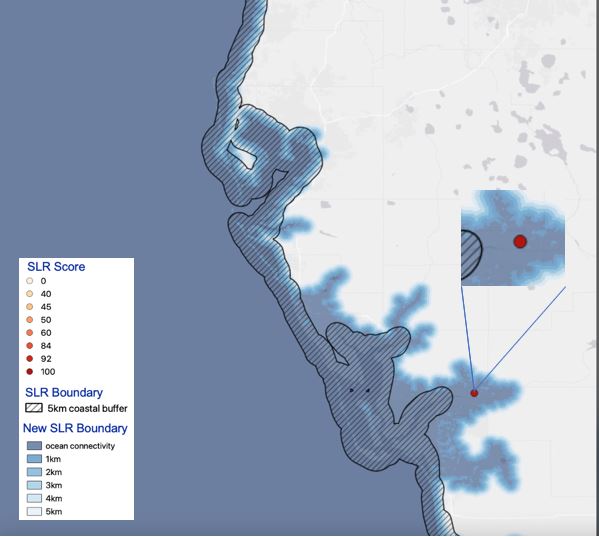As costs rise, the economy slows and federal grants decline, Tom Kozlik warns that cities, including Philadelphia, may have to adjust the way they manage their finances to prepare for tough times ahead.
(TNS) — With low interest rates, a growing U.S. economy, and all the federal money Washington sent local governments during the late pandemic, the past few years have marked a “Golden Age of public finance” for Philadelphia and other big cities, says Tom Kozlik, who’s been raising money for cities since he started as a financial analyst for city agencies under Mayor Ed Rendell.
But conditions are changing in a hurry. Costs are rising fast, the economy is slowing, federal grants are down. Cities will have to adjust the way they tax, borrow, and spend quickly, or brace for tough times in the near future, he warned city officials and investors who buy the bonds communities use to fund buildings and other long-term projects, on a recent trip home.
After leaving City Hall at the end of the 1990s, Kozlik worked in municipal finance on Wall Street until Bear Stearns blew up. He moved back here as municipal-bond managing director at Janney Capital Markets and PNC, then to Texas in 2019 as head of municipal research and analytics at HilltopSecurities, which competes with Philadelphia-based PFM as an adviser to local governments raising cash.
He’s often quoted in national media — and has lately had to throw much of his past advice out the window, as interest rates rise faster than most municipal-finance pros have ever seen, he told members of the Philadelphia Area Municipal Analyst Society (PhAMAS) recently.
The years of cheap borrowing are over: Higher rates have forced cities, like other bond issuers, to promise investors far higher bond yields to get them to buy municipal bonds. The more money spent on debt service, the less is available to pay staff and other daily bills.
It’s not just that money is getting more expensive. The pandemic chased office workers out of downtown towers, and fewer commuters are spending money or paying taxes. The federal money that eased the pandemic during mass shutdowns is drying up, and it’s not clear that a recession will convince a divided Congress to spend a lot more.
“Things aren’t going back. This is normal,” and cities should plan to cut costs or find new revenues fast, Kozlik concluded.
Here are Kozlik’s observations on threats to city finance, many of which fell on his audience like a door slamming shut:
Scared borrowers. As recently as last spring, Kozlik and other analysts were predicting municipalities would borrow a record $500 billion this year by selling bonds to pension funds and other investors. But as interest rates have spiked, cities have been delaying commitments to long-term funding, and bond sales are unlikely to reach $400 billion, this year, or next, either. That translates into fewer jobs and business contracts, and a slower economy.
Rising interest rates. Pension funding, which has cost Philadelphia more than law enforcement in recent years, is no longer Wall Street’s main worry about local governments. Even though public pensions have been drained by the financial markets’ fall and many are badly underfunded, a recent survey shows analysts are even more concerned about rising interest rates and prices, the shrinking U.S. labor force, and divisive politics that prevents decisive policy, as causes for concern that cities will go broke.
Empty offices. Workers aren’t returning to office centers, including Philadelphia’s Center City. Nationally, restaurants, air travel, and apartment rentals have recovered, post-pandemic, but only half of workers have returned to office locations; in Philadelphia and San Francisco, it’s more like 40 percent.
Lower revenue. With offices shutting, property valuations and taxes are heading down, too.
Crime. Polls show Americans are more worried about crime, and less confident police will protect them.
Construction challenges. Labor and material shortages and cost increases have crimped construction to the point where, even if the federal government resumes billions in funding to cities, city managers have told Kozlik they would have a hard time spending it on projects in the near future.
Politics. Politicization of public policy, which has stalled Congress on immigration and other key issues since the 1980s, has been spreading among state and local governments. States like Texas are banning East Coast investment banks that have adopted anti-oil and anti-gun policies; in California, activists are pressing to punish banks that finance fossil fuels and weapons makers. What that means, in practical terms, is fewer banks available to sell public debt in those restrictive states, and, therefore, higher borrowing costs for taxpayers.
“The speed and magnitude of change, and the number of variables that are evolving is not being recognized by most people,” Kozlik said later in summary. “Most people across various industries are reacting to one or two changes in the landscape. Very few recognize the major transformation going on across the board with labor, technology, education, demographics, and politics.”
The Philadelphia Inquirer
by Joseph N. DiStefano
Oct. 6, 2022
(c)2022 The Philadelphia Inquirer. Distributed by Tribune Content Agency, LLC.

